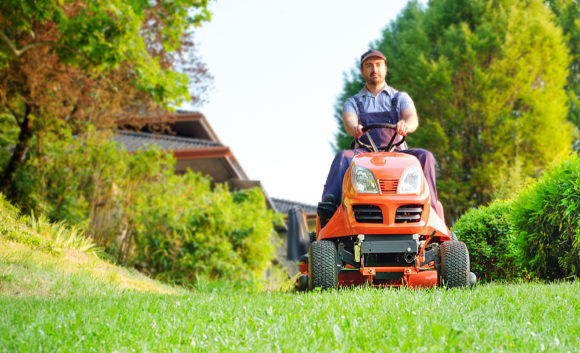In 2018, the Insurance Journal published an article titled “Lawnmower Injuries Remain Source of Serious Injury and High Costs.” A study cited in the article stated each day during the mowing season, about 30 people are injured or maimed in lawnmower accidents, with the average cost of injuries requiring medical attention $37,000. This doesn’t include lost time, pain and suffering, etc. that may also be recoverable.
It’s easy to see how a lawnmower injury involving negligence on the part of the owner or operator can potentially result in a claim exceeding the standard $100,000 homeowner policy liability limit. But even an average medical claim can cause financial disaster for a homeowner whose policy doesn’t cover the claim at all.
You’d be astonished at how tenuous coverage can be for the use of a riding lawn mower. Let’s compare the policy language between the three most recent Insurance Services Office (ISO) HO 00 03 (HO3) forms.
The 1991 edition of the ISO HO3 extends liability coverage to a riding lawnmower “Used to service an ‘insured’s residence.”
The 2000 edition of the ISO HO3 extends liability coverage to a riding lawnmower “Used SOLELY to service an ‘insured’s residence.”
The 2011 edition of the ISO HO3 extends liability coverage to a riding lawnmower “Used solely to service a residence.”
To illustrate the differences, let’s apply them to a claim scenario. I’m cutting my yard and my riding mower runs out of gas. My next-door neighbor has a riding mower with a full tank, so I use his.
While using it, the mower overturns into a ditch, the blade comes off, and another neighbor is severely injured. (This actually happened except that there was no injury.)
If I have the 1991 HO3, I’m covered while using my own, or any other, riding mower on my residence premises. As long as I use the vehicle at some point to service my own residence, I’m covered using it anywhere else in the world.
If I have the 2000 HO3, I have no coverage because my neighbor’s riding mower isn’t used solely to service MY (“an ‘insured’s'”) residence premises.
If I have the 2011 HO3, I might have coverage. As long as the riding mower is used solely to service “a” residence, for example his and mine, I’m covered. But what if the neighbor had used the riding mower to mow the lawn at the church immediately behind his home? Now there’s no coverage because the mower hasn’t been used solely to service a residence.
How many of your customers are aware of this? How many of your staff members are aware of this given the likelihood that you may represent multiple homeowners insurers with varying ISO edition dates or even their own proprietary forms?
Before we move on, what if my next-door neighbor is also sued as the owner and servicer of the riding mower in this claim? Would his HO3 cover him?
If he has the 1991 HO3, he’s covered if his riding mower is ever used to service his residence premises.
If he has the 2000 HO3, he has no coverage because, now that the riding mower has been used to service a residence other than his own, he has no coverage now or in the future.
If he has the 2011 HO3, again, it depends on whether his riding mower has been used to service any premises that are not residential premises, such as the church property behind his home. But wait, as it turns out, several neighbors had mowed that property, but my next-door neighbor had only mowed the parsonage lawn. Since the parsonage is a residence, NOW he has coverage.
Doesn’t this all make logical sense? Imagine explaining this to a customer who asks simply, “Does my homeowners insurance cover me on my riding mower?”
Given that Halloween is fast approaching, let’s examine one more liability scenario. In my old neighborhood, one of the residents would attach a flatbed trailer to his large John Deere lawn tractor, cover it in hay, and haul small children throughout the neighborhood trick or treating. What if one of them falls off and suffers a traumatic brain or cervical injury?
If he has the 1991 HO3, he’s covered as long as he has used the riding mower to service his own residence premises.
If he has the 2000 HO3, he has no coverage, nor will he have any coverage from now on when he mows his own yard because the riding mower is no longer used SOLELY to service his residence premises.
If he has the 2011 HO3, he has no coverage because he clearly is not using the vehicle to service a residence of any kind.
So far, we’ve been talking hypothetically and only about the homeowners liability exposure. Similar language is used to determine coverage for first-party property damage to a motor vehicle that services the premises. To show you the extremes to which this language can be taken, consider an actual claim brought to my attention last year.
An insured bought a $6,000 lawn tractor and put it in his garage overnight. The next morning, he discovered it was stolen. The claim was denied with a rationale it wouldn’t matter which edition ISO HO3 he had. According to the adjuster, because the vehicle had never been “used to service” the premises, he had no coverage under the HO3-s motor vehicle exclusion. It may seem ludicrous, but it is correct if you accept a literal reading of the policy.
That brings us to soapbox time. Is the complexity of this coverage/exclusion warranted? We only looked at the ISO form but there are far more variations in non-ISO policies. Think of the millions of homeowners who use riding lawn mowers — most unaware that they’re riding around on a potentially catastrophic homeowners exclusion.
Should ALL uses of riding mowers be covered? Of course not. There’s actually a lawn mower racing association and coverage for that activity isn’t warranted under a homeowners policy. However, most other uses probably are, even the foolish idea of hauling young children around in the dark on Halloween eve.
While we don’t have time to explore it here, take my word that there is potentially more liability coverage in an ISO homeowners policy for a four-year-old riding an ATV at 40 mph than there is a 40-year-old riding a lawn mower at 4 mph. The only requirement for the use of an owned recreational vehicle is that it be used on an “insured location.” If it’s non-owned, the coverage is worldwide. There is no “residence” limitation. Nor is there any sense to how motor vehicle coverage applies in most homeowners policies. Shouldn’t we fix this?
Topics Auto Liability Homeowners
Was this article valuable?
Here are more articles you may enjoy.



 ’60 Minutes’ Homeowners Ask Court to Force DFS to Divulge Heritage Probe Info
’60 Minutes’ Homeowners Ask Court to Force DFS to Divulge Heritage Probe Info  Litigation Funding, Other New Laws in SE States Could Impact Liability Insurance
Litigation Funding, Other New Laws in SE States Could Impact Liability Insurance  Kansas Man Sentenced to Probation for Insurance Fraud
Kansas Man Sentenced to Probation for Insurance Fraud  Is the AI Boom a Bubble Waiting to Pop? Here’s What History Says
Is the AI Boom a Bubble Waiting to Pop? Here’s What History Says 



